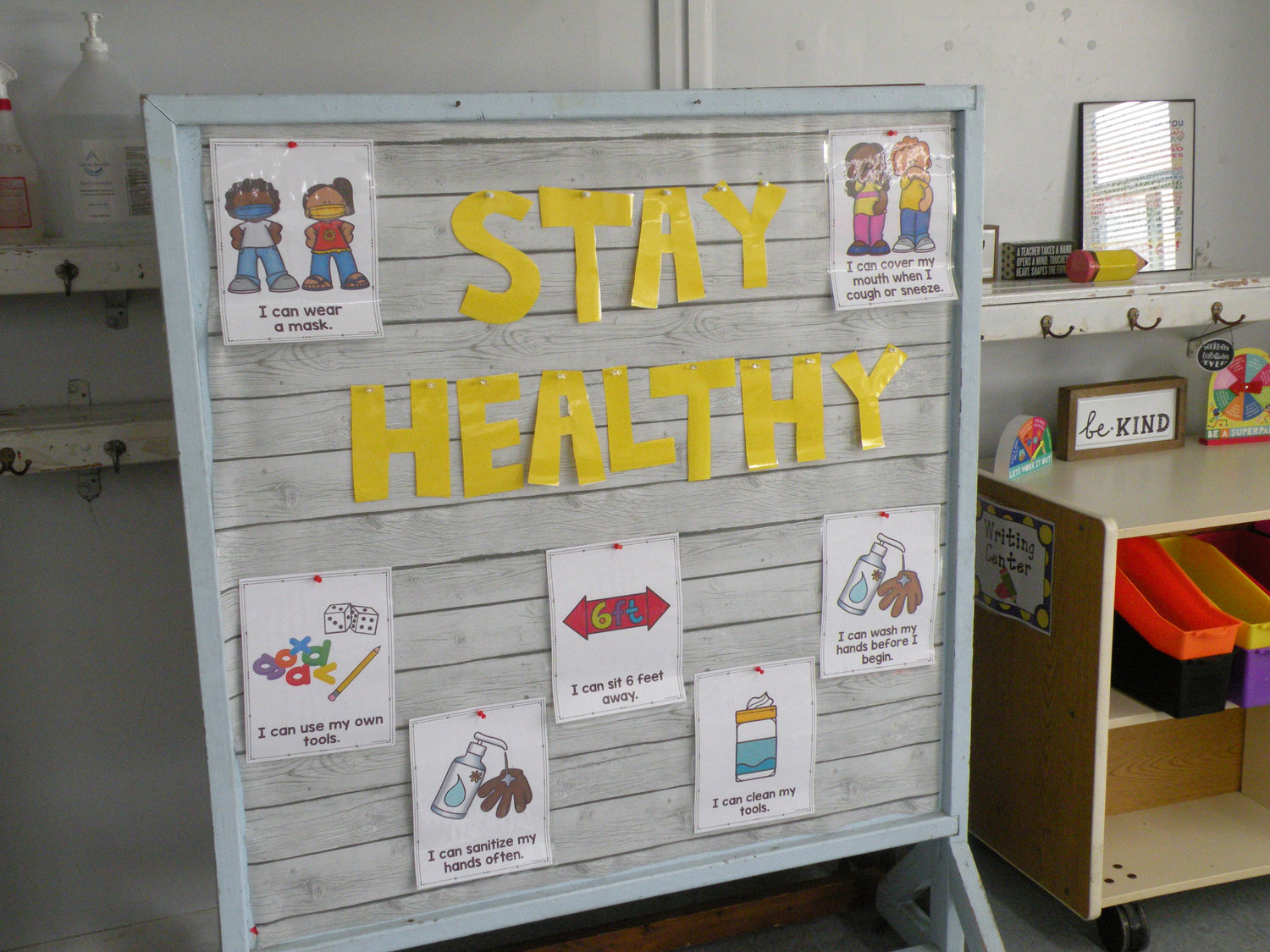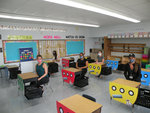Schools prepare to spread knowledge, not Covid
In mid-March, schools across Long Island were faced with a harsh reality: In order to protect their students and faculties, they had to close and quickly convert to a remote learning model. Six months later, many families must decide whether to keep their children home, and continue remote learning, or send them back to school on various hybrid schedules, as outlined on the Wantagh, Seaford and Levittown school district websites.
In the three communities, a large majority of students have opted to go back to school. In Wantagh, roughly 92 percent of students have opted for a hybrid program.
Wantagh students in grades 7 to 12 will attend classes on Mondays and Tuesdays or Thursdays and Fridays, alternating Wednesdays between them. Grades K-5 will attend every day, but in smaller classes; grade 6 will also attend every day, using large spaces like the cafeteria or the auditorium.
District employees have prepared school buildings with social distancing and frequent disinfecting of shared surfaces in mind, and students will be sporting this fall’s ubiquitous back-to-school clothing accessory — a mask.
Hallways in all three districts now incorporate arrows that direct one-way traffic as students move from class to class. At MacArthur High School in Levittown, the lanes have specific foot traffic restrictions. Wantagh High School and Middle School followed suit.
“Each floor of the building is dissected and split into two lanes,” MacArthur Principal Joseph Sheehan said. “Students have to stay on their side of the hallway, and you can’t cross over into oncoming foot traffic. Once a student leaves the classroom, they must turn right and follow the flow of traffic to where they need to go next.”
In classrooms, students sit six feet apart. At MacArthur, Sheehan said, students will cover their desks with single-use sheets of butcher paper, discarding them after each class. Plastic tri-fold desk shields are intended to halt the virus’s spread.
Students will spend most of their time in school in their class cohorts, while teachers move between classrooms.
When students at Seaford High School must go to other classrooms for special instruction, they will be given shields to carry. “We give them their own shield that they can take from class to class to avoid more than one person using the same shield,” Assistant Principal Nicole Schnabel explained.
One of the major focuses in all three districts has been avoiding the clustering of large groups outside classrooms. Each district has devised its own variation on the hybrid schedule.
In Seaford schools, students are divided into two groups. One group will come in the morning, for the first five periods, and the second group will come in for the afternoon. A fleet of buses — which Schnabel said are owned by the district and are therefore able to adapt to the schedule — will pick up the first group and drop them back at home at the midday break, while another convoy of buses will pick up and bring home the later group.
At Manor Elementary School, each grade will use a different point of entry and exit for arrival and dismissal. At MacArthur, Sheehan said, “We have Cohort A and Cohort B.” Students whose last names begin with A through K alternate with those with names starting with L through Z. “So students who opted for the hybrid model come in every other day.”
Sheehan said that roughly 90 percent of students at MacArthur opted for the hybrid model, while the rest chose remote learning. And students are being held to their decision until the second semester. The Seaford District, in contrast, is allowing a short grace period — roughly two weeks — for students to switch from remote learning to hybrid, or vice versa. Those who decide to transition from remote to in-class, though, will have to be medically evaluated before they are admitted.
Wantagh had a deadline before the year started, but Superintendent John McNamara said that students looking to switch formats could make requests. “We want to make sure the students are comfortable,” he said.
Every district will require students to fill out daily online screening forms before arriving at school. They will be asked about recent exposure to infected individuals and symptoms. They will have their temperatures taken either at home, by a parent who will certify that a child is healthy, or by school personnel.
“Any student or faculty member that tests over 100 degrees Fahrenheit will be sent home,” Sheehan said. “Parents will be contacted for students whose temperatures are 100 or over. They will have to be evaluated by their doctor and cleared before being allowed back in the school building.”
Finally, to slow the spread of germs at lunchtime, all three districts are avoiding clustering in the cafeterias. At MacArthur, large tables have been replaced by student desks six feet apart. The cafeteria at the Manor School will not be used. Students will be asked to eat at their desks in their classrooms.

 44.0°,
Mostly Cloudy
44.0°,
Mostly Cloudy 







